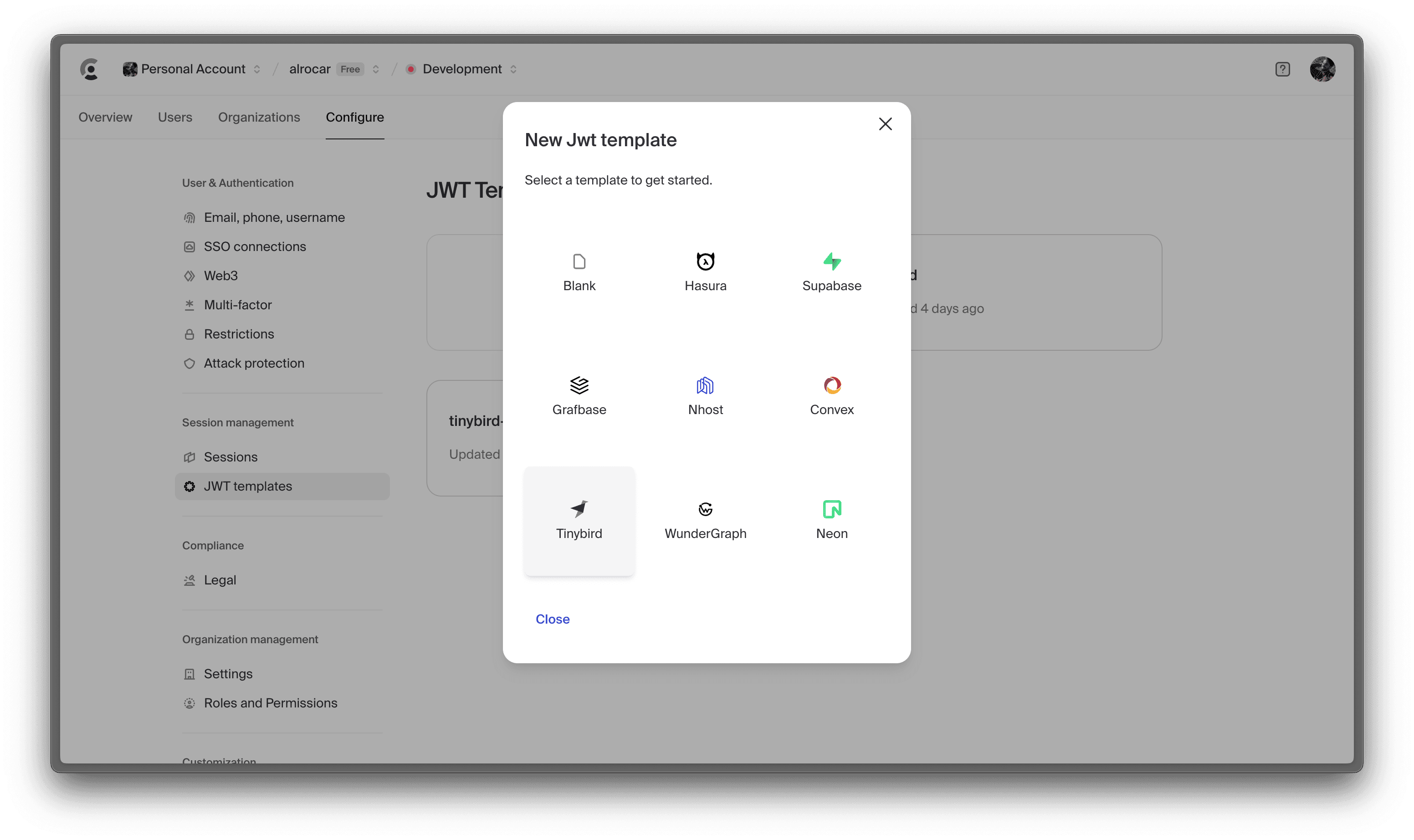Multi-tenant real-time APIs with Clerk and Tinybird¶
Learn how to build a multi-tenant real-time API with Clerk and Tinybird.
You can view the live demo or browse the GitHub repo (clerk-tinybird).
Prerequisites¶
This guide assumes that you have a Tinybird account, and you are familiar with creating a Tinybird workspace and pushing resources to it.
You need a working familiarity with Clerk and Next.js.
JWT Template¶
Create a JWT template in Clerk, and use the generated JWT to access Tinybird pipe endpoints.
In Clerk go to Configure > JWT Templates and choose Tinybird.

Modify the Tinybird JWT template with these claims:
{
"name": "frontend_jwt",
"limits": {
"rps": 10
},
"scopes": [
{
"type": "PIPES:READ",
"resource": "<YOUR-TINYBIRD-PIPE-NAME>",
"fixed_params": {
"org": "{{org.slug}}",
"user": "{{user.id}}"
}
}
],
"workspace_id": "<YOUR-TINYBIRD-WORKSPACE-ID>"
}
- Use your Tinybird admin token as signking key.
- Add as many scopes as needed, use fixed params to filter your Tinybird API endpoints.
- Configure
fixed_paramsto match the parameter names and values in your Tinybird API endpoints.
On your application request a token to Clerk using the tinybird template, where tinybird is the name you gave to the template.
const authentication = await auth()
const { userId, sessionId, getToken } = authentication
const token = await getToken({ template: "tinybird" })
fetch('https://api.tinybird.co/v0/pipes/your_pipe.json', {
headers: {
Authorization: `Bearer ${token}`
}
})
Use this demo project to for a fully working example.